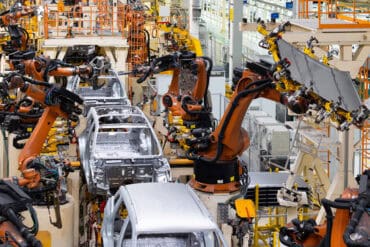
Integrating AI and GenAI into turnaround planning marks a significant shift towards proactive, efficient, and safe industrial operations. By embracing data-driven strategies, organizations can optimize their maintenance processes and achieve long-term operational excellence.
In the industrial sector, turnarounds, which are planned shutdowns for maintenance and upgrades, are critical yet complex events. Traditionally, they involve extensive manual planning, gathering of siloed data, and reactive decision-making, often leading to extended downtimes and budget overruns. However, many industrial organizations are eyeing the use of Artificial Intelligence (AI) and Generative AI (GenAI) to improve their turnaround planning efforts. The hope is that, via AI, organizations can move to more data-driven turnaround strategies that enhance efficiency, safety, and cost-effectiveness.
The Traditional Turnaround Landscape
Turnarounds are essential for ensuring the longevity and safety of industrial assets. Turnaround planning refers to the structured, strategic process of preparing for a temporary shutdown of industrial operations, such as those in oil and gas, chemicals, or power generation facilities, for essential maintenance, inspections, upgrades, or regulatory compliance.
Large-scale versions of these events often occur every few years and are vital to ensuring operations’ long-term reliability, safety, and performance. For example, a refinery might plan a 30-day turnaround to inspect pressure vessels, replace critical valves, and upgrade automation systems. The planning process can span 12 to 24 months and involves coordinating thousands of tasks, contractors, and materials, all within tight time and budget constraints.
Many such efforts are fraught with challenges. For example, many industrial organizations have data silos. Information required for turnaround planning is often scattered across departments, making it difficult to access and analyze critical data.
Additionally, turnaround planning in most industrial organizations is a manual process. It often relies heavily on spreadsheets and human expertise, increasing the risk of errors. Furthermore, most plans are created and enacted without real-time insights. As such, organizations respond to issues as they arise, rather than proactively preventing them.
These challenges can lead to extended downtimes, increased costs, and safety risks.
Embracing AI and GenAI in Turnaround Planning
AI and Generative AI (GenAI) are increasingly used to enhance turnaround planning by transforming traditionally manual, siloed processes into data-driven, collaborative workflows.
AI enables predictive maintenance by analyzing historical and real-time data to forecast equipment failures and optimize maintenance schedules, reducing unplanned downtime. Meanwhile, GenAI accelerates knowledge discovery by summarizing technical documents, generating work packages, and automating routine planning tasks. These technologies help planners identify risks earlier, allocate resources more effectively, and create more realistic schedules, ultimately improving safety, reducing costs, and shortening the duration of turnarounds.
Additionally, organizations can apply AI and GenAI capabilities to the issues that have impeded successful turnaround planning for years. For example, AI and GenAI can help with:
Unified Data Access: Organizations frequently use AI and GenAI to provide access to contextualized data, integrating information from various sources into a single, coherent view. This unification enables planners to make informed decisions based on comprehensive insights.
Advanced Analytics: AI-powered tools analyze historical and real-time data to predict potential issues, optimize schedules, and allocate resources efficiently. This predictive capability reduces unplanned downtimes and enhances safety.
Generative AI Applications: GenAI can automate the creation of work packages, summarize technical documents, and suggest optimal maintenance strategies. By processing vast amounts of data, GenAI provides actionable insights that were previously unattainable.
See also: What are AI Agents and How Are They Used in Different Industries?
Benefits of Data-Driven Turnaround Planning
Implementing AI and GenAI in turnaround planning yields significant advantages:
- Reduced Downtime: Organizations can reduce planned downtimes by predicting issues and optimizing schedules.
- Cost Savings: Efficient resource allocation and proactive maintenance lead to budget adherence and potential cost reductions.
- Enhanced Safety: Predictive analytics identify risks before they materialize, ensuring the safety of personnel and assets.
- Improved Collaboration: Unified data platforms facilitate better communication between field and office teams, streamlining operations.
Organizations aiming to adopt data-driven turnaround planning need to take a number of steps. To start, they must assess data readiness to ensure data is accurate, accessible, and integrated across systems. They must invest in the right tools and choose platforms that offer AI and GenAI capabilities tailored to industrial needs. They must also train personnel with the skills to interpret AI-generated insights and make informed decisions.
As with any type of technology-based project, it makes sense to start small. Organizations should try pilot AI initiatives in specific areas before scaling across the organization.
Conclusion
Integrating AI and GenAI into turnaround planning marks a significant shift towards proactive, efficient, and safe industrial operations. By embracing data-driven strategies, organizations can optimize their maintenance processes and achieve long-term operational excellence.





